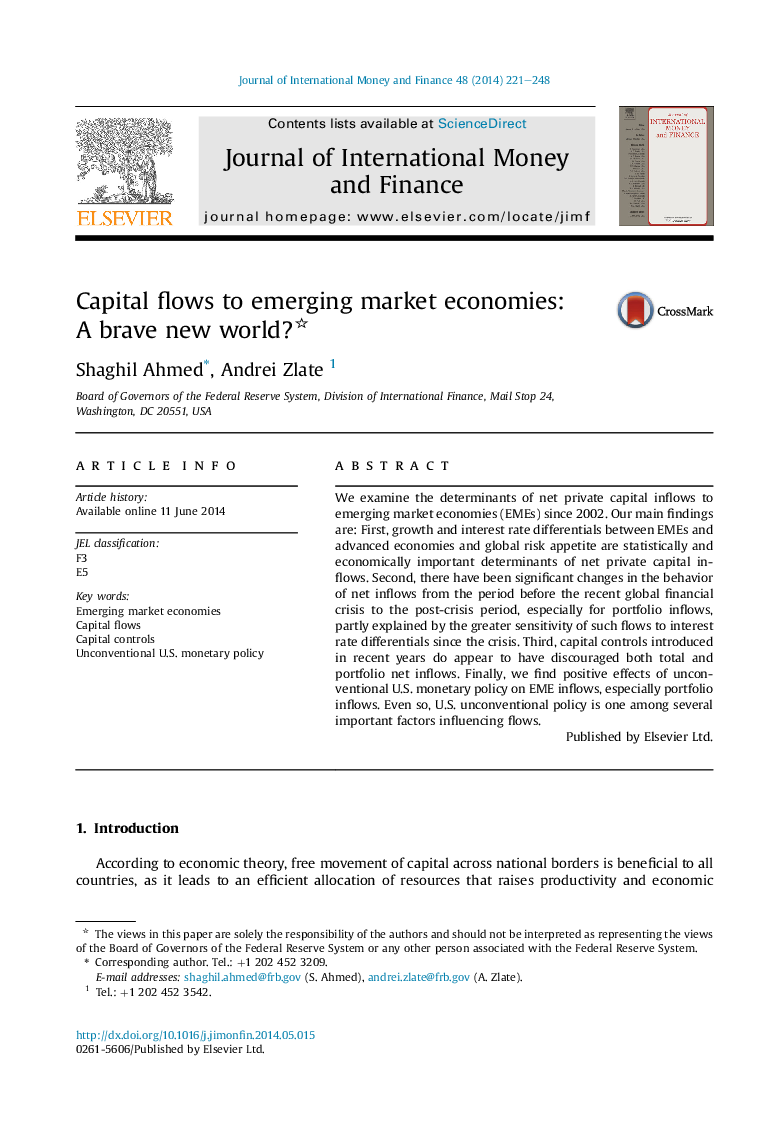| Article ID | Journal | Published Year | Pages | File Type |
|---|---|---|---|---|
| 963449 | Journal of International Money and Finance | 2014 | 28 Pages |
Abstract
We examine the determinants of net private capital inflows to emerging market economies (EMEs) since 2002. Our main findings are: First, growth and interest rate differentials between EMEs and advanced economies and global risk appetite are statistically and economically important determinants of net private capital inflows. Second, there have been significant changes in the behavior of net inflows from the period before the recent global financial crisis to the post-crisis period, especially for portfolio inflows, partly explained by the greater sensitivity of such flows to interest rate differentials since the crisis. Third, capital controls introduced in recent years do appear to have discouraged both total and portfolio net inflows. Finally, we find positive effects of unconventional U.S. monetary policy on EME inflows, especially portfolio inflows. Even so, U.S. unconventional policy is one among several important factors influencing flows.
Related Topics
Social Sciences and Humanities
Economics, Econometrics and Finance
Economics and Econometrics
Authors
Shaghil Ahmed, Andrei Zlate,
